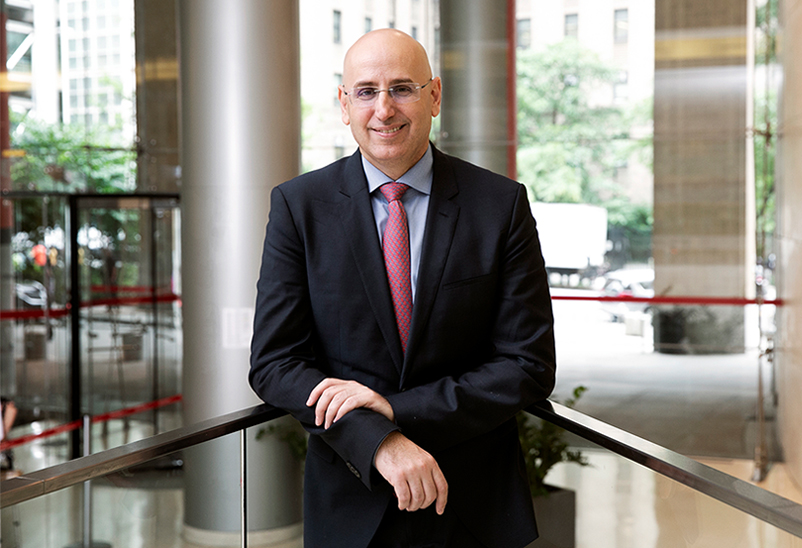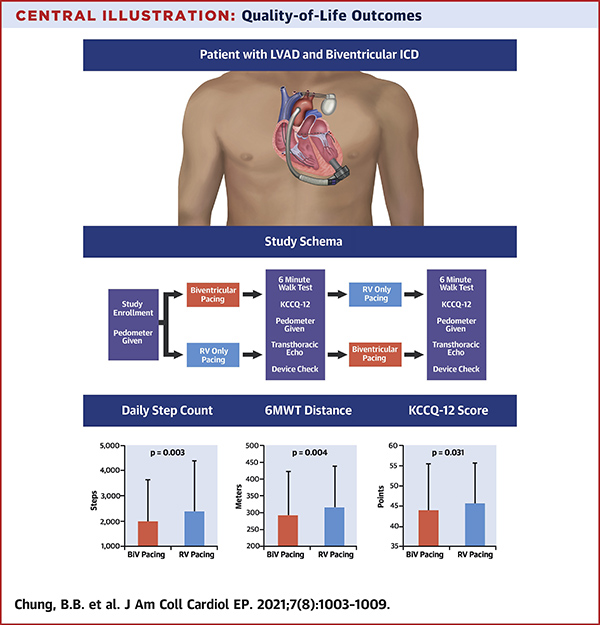A significant number of patients with heart failure have cardiac resynchronization therapy (CRT) devices implanted at the time of LVAD implantation and both independently improve patient outcomes. While evidence related to the benefits of combining these therapies remains scant, cardiologists at NewYork-Presbyterian Hospital and colleagues at the University of Chicago undertook a study on the pathophysiologic mechanisms in place when these two heart failure technologies are used together.
Nir Uriel, MD, Director of Advanced Heart Failure and Cardiac Transplantation at NewYork-Presbyterian, is an internationally recognized leader in heart failure, mechanical circulatory support, and heart transplantation and served as a major collaborator on the study.
Results of this first prospective randomized blinded study evaluating the effects of right ventricular (RV) versus biventricular (BiV) pacing on quality of life, functional status, and arrhythmias in LVAD patients were published in the August 2021 issue of JACC: Clinical Electrophysiology.
The study enrolled 30 patients with a median age of 65 years and a mean duration of LVAD support of 309 days. Thirty-three percent of patients had complete heart block and were pacemaker dependent, precluding the possibility of turning off pacing from their device. LVAD patients with prior CRT devices were alternated on RV and BiV pacing for 7- to 14-day periods during which data was collected on ambulatory step count, 6-minute walk test distance, Kansas City Cardiomyopathy Questionnaire (KCCQ) scores, arrhythmia burden, CRT lead function, and echocardiographic data. RV-only pacing surpassed BiV pacing across multiple domains. Compared with BiV pacing, RV-only pacing resulted in:
- 29 percent higher mean daily step count, with 80 percent of patients experiencing higher step counts
- 11 percent higher 6-minute walk test distance
- 7 percent improved KCCQ-12 score
- Significantly lower left ventricular end-diastolic volume (220 vs. 250 mL)
- Fewer episodes of ventricular tachyarrhythmia (VT), which challenges previous data showing a lower VT burden with CRT
- Lower RV lead impedance
The researchers also observed early signs that there may be improved reverse remodeling in LVAD patients who have RV pacing as demonstrated by decreased LV end-diastolic volume.
Quality-of-life outcomes for biventricular pacing versus right ventricular pacing in patients with LVADs (Chung BB et al. Journal of the American College of Cardiology: Electrophysiology. 2021 Aug;7(8):1003-1009).
Overall, the study demonstrated that RV pacing was associated with significantly improved functional status and quality of life, with fewer ventricular tachyarrhythmias and a stable lead impedance compared with BiV pacing. In light of their findings, the authors recommend turning off LV lead pacing in patients on LVAD support with CRT devices.
Pacesetters in Mechanical Circulatory Support
Dr. Yoshifumi Naka
NewYork-Presbyterian has more than 30 years of experience in LVAD implantation and monitoring. Our internationally known cardiac surgeons have pioneered technology and techniques in this field, particularly in the management of complex cases deemed too ill by other institutions to receive an LVAD. Our surgeons specialize in the implantation of a wide variety of VADs, selected and tailored for each individual patient and their particular situation.
Yoshifumi Naka, MD, PhD, a renowned heart transplant surgeon and a pioneer in mechanical assist therapy for heart failure, is the bi-campus Director of the Mechanical Circulatory Support program for NewYork-Presbyterian Hospital. Dr. Naka, who is a member of the cardiac surgery faculty of Weill Cornell Medicine, has served as lead investigator in several clinical trials paving the way in the research and innovation of new approaches to mechanical circulatory assistance, including use of these devices as destination therapy for patients with advanced heart failure.






